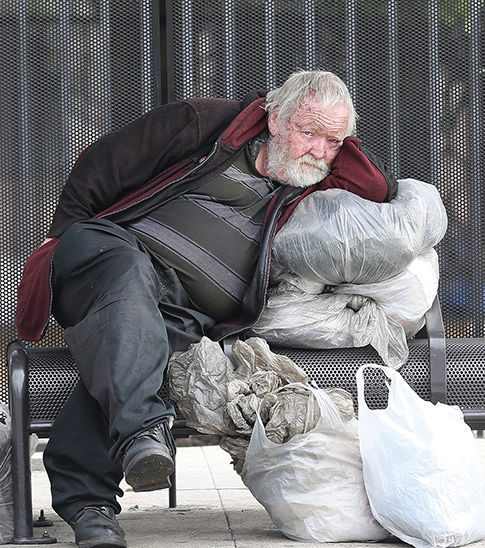They are the “hidden homeless,” and they are legion.
The Los Angeles Homeless Services Authority tries to count the number of homeless individuals each year, but this year they also estimated the number of individuals who live in their cars.
Of an estimated 39,000 homeless persons living in L.A. County, more than 8,000 live in their cars, according to LAHSA’s George McQuade. The city of Los Angeles alone has nearly 5,000 people living in 3,000 cars.
Living in a car is particularly challenging for families with children, said Adrian Dena, district president of the Society of St. Vincent de Paul in San Fernando. He recounted how he and other Vincentians had encountered a family of nine living in their minivan.
During the day, the kids would go to school while the adults worked. They all came back together at the end of the day, found a safe place to park and went to sleep. The Society of St. Vincent found temporary housing for the family while they got on their feet.
Another woman Dena met lived in her car with her two children. When she went to work, she would park the car out front where her children would wait for her.
Some individuals sleep in their cars while maintaining a gym membership. They shower at the gym before going to work.
“Some people go years living in their cars, maintaining an otherwise normal life,” Dena said. “It’s sad. Some get used to it, but families don’t.”
Lack of employment and mental health issues are causes of homelessness. But Dena underscored bad credit and application fees in particular. If you have bad credit, it’s almost impossible to find a place in L.A. County — unless you know someone, Dena said.
“The longer you stay on the streets, the worse your credit gets,” he said. Some individuals and families start living in their cars to save but wind up staying longer than they planned.
“The home is so important because it’s the foundation,” Dena said. “It’s a domino effect. When kids have to go through this, it’s traumatizing.”
Most agencies don’t differentiate between those who live in their cars and those who live on the streets, according to Laurence Hurst, director of social services for the Society of St. Vincent de Paul in L.A.
It’s the “hidden” part of homelessness, he said. “There is no way to accurately assess the number of people living in vehicles.”
It’s more clear in “beach” areas like Venice, Hurst said. In June, the U.S. Ninth District Court of Appeals overturned a ban on car dwelling there, arguing it criminalized “innocent behavior.”
Car dwelling, Hurst said, is addressed when people in the area complain. But, for the most part, it’s a problem that goes unnoticed.

